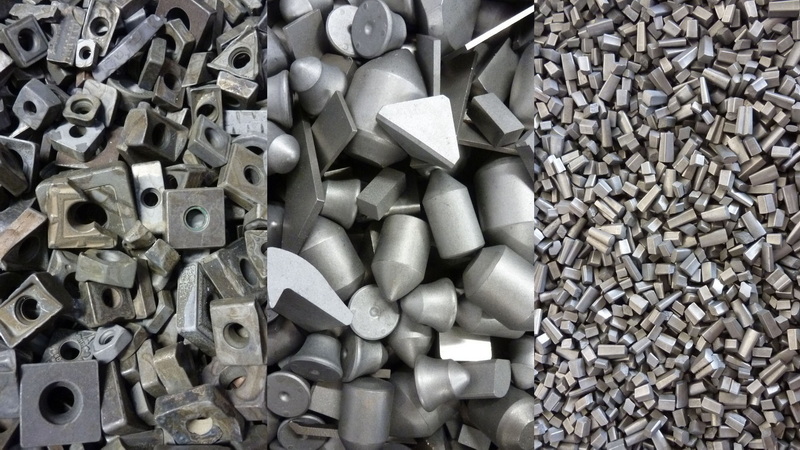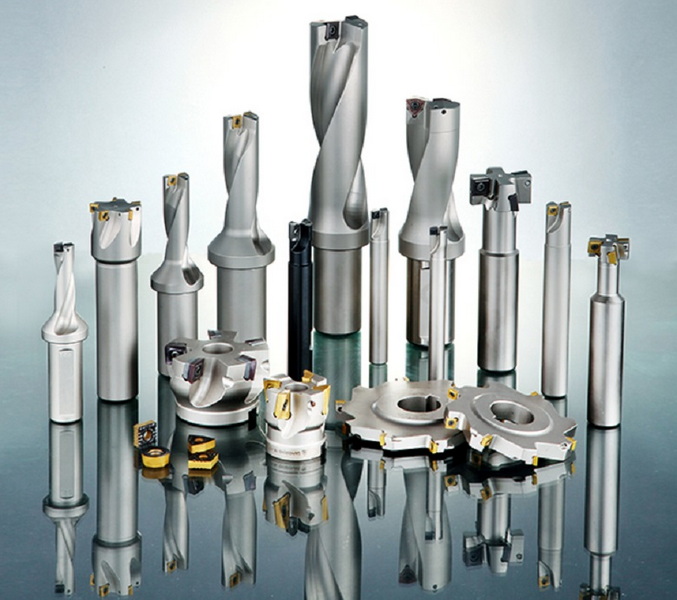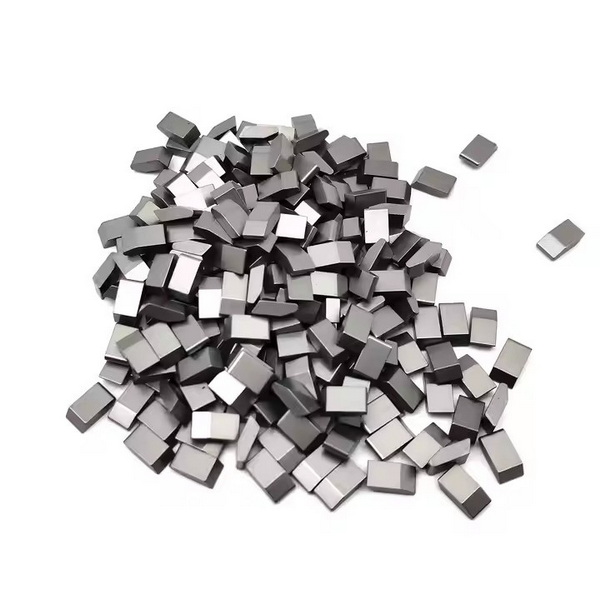Content Menu
● Introduction to Tungsten Carbide
>> Properties of Tungsten Carbide
● Electrical Conductivity of Tungsten Carbide
>> Factors Influencing Conductivity
● Applications of Tungsten Carbide
● Thermal Properties
>> Thermal Expansion Coefficient
● Manufacturing Process
>> Effects of Sintering on Conductivity
● Comparison with Other Materials
>> Comparison with Titanium Carbide
>> Comparison with Silicon Carbide
● Environmental and Health Considerations
>> Environmental Impact
>> Health Risks
● Advanced Applications
>> Wear-Resistant Coatings
>> Composite Materials
● Future Developments
>> Nanotechnology
>> Sustainability
● Conclusion
● FAQ
>> 1. Is Tungsten Carbide Conductive?
>> 2. What Factors Influence the Conductivity of Tungsten Carbide?
>> 3. How Does Tungsten Carbide Compare to Copper in Terms of Conductivity?
>> 4. What Are the Main Applications of Tungsten Carbide?
>> 5. Is Tungsten Carbide Used in Electronic Components?
● Citations:
Tungsten carbide, known for its exceptional hardness and wear resistance, is a widely used material in various industrial applications. However, its electrical conductivity is often misunderstood. In this article, we will delve into the properties of tungsten carbide, explore its electrical conductivity, and discuss its applications.

Introduction to Tungsten Carbide
Tungsten carbide (WC) is a chemical compound consisting of equal parts tungsten and carbon atoms. It is renowned for its high melting point, hardness, and resistance to corrosion and wear. These properties make it an ideal material for cutting tools, wear parts, and other industrial components.
Properties of Tungsten Carbide
- Hardness: Tungsten carbide ranks between 9.0 and 9.5 on the Mohs scale, making it one of the hardest materials available, second only to diamond.
- Thermal Conductivity: It has a thermal conductivity of approximately 100 W/mK, which is twice that of unalloyed steels and about one-third that of copper.
- Electrical Conductivity: Tungsten carbide exhibits electrical conductivity, though it is not as high as metals like copper or silver. Its conductivity is comparable to tool steel and carbon steel.
Electrical Conductivity of Tungsten Carbide
Tungsten carbide is electrically conductive, but its conductivity is achieved through a "jump" mechanism rather than free-electron movement like metals. This means electrons move from one location to another, forming a current. The presence of a metallic binder, such as cobalt, can enhance its electrical conductivity.
Factors Influencing Conductivity
- Binder Content: The amount of metallic binder, such as cobalt, can significantly affect the electrical conductivity of tungsten carbide. Higher cobalt content generally increases conductivity.
- Microstructure: The microstructure of tungsten carbide, including grain size and phase composition, can influence its electrical properties.
Applications of Tungsten Carbide
Tungsten carbide's unique combination of hardness, thermal conductivity, and electrical conductivity makes it suitable for various applications:
1. Cutting Tools: Its hardness and wear resistance make it ideal for manufacturing cutting tools used in machining metals and other hard materials. These tools are essential in industries such as aerospace, automotive, and construction.
2. Mining Tools: Tungsten carbide is used in drill bits and other mining equipment due to its durability under extreme conditions. The high hardness ensures that the tools can withstand the abrasive nature of mining operations.
3. Jewelry: Tungsten carbide rings are popular for their scratch resistance and modern aesthetic. However, in jewelry form, tungsten carbide is often non-conductive due to its ceramic-like structure. This is because the manufacturing process for jewelry often involves sintering at high temperatures, which can reduce conductivity.
4. Industrial Machinery: Components made from tungsten carbide are used in machinery that requires high precision and durability. This includes parts for pumps, valves, and other equipment where wear resistance is crucial.
5. Abrasive Materials: Tungsten carbide is also used in abrasive materials like grinding wheels and sandpaper due to its hardness.
Thermal Properties
Tungsten carbide has a low coefficient of thermal expansion, which is beneficial for maintaining dimensional stability in high-temperature environments. Its thermal conductivity is significant, making it suitable for applications requiring efficient heat transfer.
Thermal Expansion Coefficient
The coefficient of thermal expansion (CTE) of cemented tungsten carbide is extremely low, roughly half that of ferritic and martensitic steels, and about one-third that of austenitic steels. This property ensures that components made from tungsten carbide do not deform significantly under thermal stress.
Manufacturing Process
The manufacturing process of tungsten carbide involves sintering tungsten carbide powder with a metallic binder, typically cobalt. The sintering process can be done through various methods, including hot isostatic pressing (HIP) and vacuum sintering. The choice of manufacturing method can affect the final properties of the material, including its electrical conductivity.
Effects of Sintering on Conductivity
The sintering process can influence the electrical conductivity of tungsten carbide by affecting the distribution of the metallic binder. A uniform distribution of cobalt enhances conductivity, while a non-uniform distribution can lead to reduced conductivity.

Comparison with Other Materials
Tungsten carbide is often compared to other hard materials like titanium carbide and silicon carbide. While these materials share some similarities with tungsten carbide, they differ significantly in terms of electrical conductivity and thermal properties.
Comparison with Titanium Carbide
Titanium carbide (TiC) is another hard material used in wear-resistant applications. However, it has a higher thermal conductivity than tungsten carbide but lower electrical conductivity. Titanium carbide is often used in coatings and composites.
Comparison with Silicon Carbide
Silicon carbide (SiC) is a semiconductor material with high thermal conductivity but lower electrical conductivity compared to metals. It is used in electronic components and abrasives.
Environmental and Health Considerations
The production and use of tungsten carbide have environmental and health implications. Tungsten mining can lead to environmental degradation, and exposure to tungsten carbide dust during manufacturing can pose health risks.
Environmental Impact
The extraction of tungsten often involves open-pit mining, which can lead to soil erosion and water pollution. Efforts are being made to improve mining practices and reduce environmental impact. Recycling tungsten carbide is also becoming more prevalent to minimize waste and reduce the demand for primary tungsten.
Health Risks
Workers in industries using tungsten carbide may be exposed to dust during machining processes. This can lead to respiratory issues if proper safety measures are not taken. Protective equipment and ventilation systems are essential to mitigate these risks. Regular health checks and training programs are also important for ensuring worker safety.
Advanced Applications
Tungsten carbide is also being explored for advanced applications, including wear-resistant coatings and composite materials. These applications leverage its hardness and thermal stability to enhance the performance of various systems.
Wear-Resistant Coatings
Tungsten carbide coatings are applied to surfaces to improve wear resistance. These coatings are particularly useful in high-wear environments, such as in aerospace and automotive components.
Composite Materials
Tungsten carbide is used in composite materials to enhance hardness and thermal conductivity. These composites are used in applications requiring high strength and durability, such as in rocket nozzles and high-speed cutting tools.
Future Developments
As technology advances, there is ongoing research into improving the properties of tungsten carbide. This includes developing new manufacturing techniques to enhance conductivity and exploring new applications in emerging industries.
Nanotechnology
Nanotechnology is being applied to create nanostructured tungsten carbide materials with improved properties. These materials have potential applications in advanced electronics and energy storage devices.
Sustainability
Efforts are being made to make tungsten carbide production more sustainable. This includes improving recycling processes and reducing waste during manufacturing. Sustainable practices are crucial for ensuring the long-term viability of tungsten carbide in various industries.
Conclusion
Tungsten carbide is indeed electrically conductive, though its conductivity is limited compared to metals like copper. Its unique properties make it invaluable in various industrial applications, from cutting tools to jewelry. Understanding its electrical and thermal properties is crucial for optimizing its use in different contexts.

FAQ
Here are some frequently asked questions about tungsten carbide's conductivity and properties:
1. Is Tungsten Carbide Conductive?
Yes, tungsten carbide is conductive, but its conductivity is lower than that of metals like copper. It is comparable to tool steel and carbon steel.
2. What Factors Influence the Conductivity of Tungsten Carbide?
The presence of a metallic binder, such as cobalt, and the microstructure of the material can influence its electrical conductivity.
3. How Does Tungsten Carbide Compare to Copper in Terms of Conductivity?
Tungsten carbide's electrical conductivity is about 10% that of copper, making it less efficient for applications requiring high electrical conductivity.
4. What Are the Main Applications of Tungsten Carbide?
Tungsten carbide is used in cutting tools, mining equipment, jewelry, and industrial machinery due to its hardness, wear resistance, and thermal stability.
5. Is Tungsten Carbide Used in Electronic Components?
While tungsten carbide is conductive, it is not typically used in electronic components due to its lower conductivity compared to metals like copper. However, it can be used in applications where its unique properties are beneficial.
Citations:
[1] https://www.ls-carbide.com/news/Is-tungsten-carbide-electrically-conductive-.htm
[2] https://www.hyperionmt.com/en/Resources/materials/cemented-carbide/thermal-properties/
[3] https://www.linkedin.com/pulse/properties-tungsten-carbide-shijin-lei-2c
[4] https://www.istockphoto.com/photos/tungsten-carbide
[5] https://en.wikipedia.org/wiki/Tungsten_carbide
[6] https://www.alamy.com/stock-photo/tungsten-carbide.html
[7] https://onlytungstenrings.com/is-tungsten-carbide-conductive/
[8] https://www.sollex.se/en/blog/post/tungsten-carbide-and-technology-part-2
[9] https://www.freepik.com/free-photos-vectors/tungsten-carbide
[10] https://www.ipsceramics.com/technical-ceramics/tungsten-carbide/
[11] https://shop.machinemfg.com/does-tungsten-conduct-electricity-key-facts-and-insights/
[12] https://carbideprocessors.com/pages/carbide-parts/tungsten-carbide-properties.html
[13] http://picture.chinatungsten.com/list-18.html
[14] https://blog.fullertontool.com/tool-tip-thermal-conductivity-as-related-to-materials-vs.-carbide
[15] https://www.zhongbocarbide.com/is-tungsten-carbide-conductive.html
[16] https://www.imetra.com/tungsten-carbide-material-properties/
[17] https://domadia.net/blog/is-tungsten-a-good-conductor-of-electricity/
[18] https://wesltd.com/capabilities/materials/tungsten-carbide/
[19] https://www.shutterstock.com/search/tungsten-carbide
[20] https://www.freepik.com/free-photos-vectors/tungsten
[21] https://periodictable.com/Elements/074/pictures.html
















